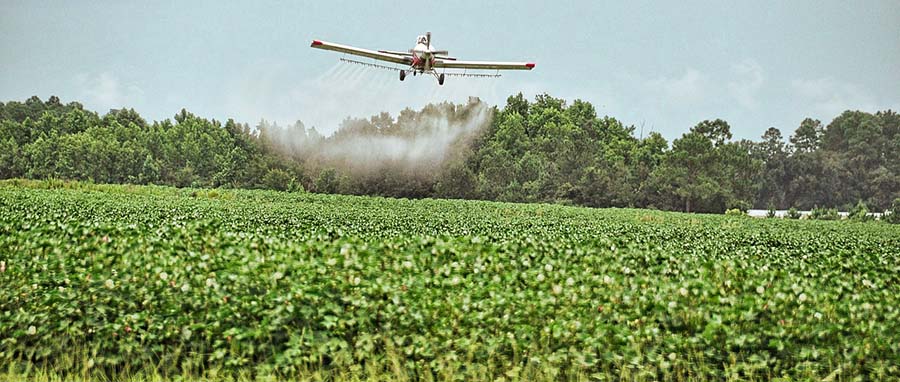New Study Shows People of Color in U.S. Are More Likely to Be Harmed by Pesticides Due to Weak Regulations, Lax Enforcement
WASHINGTON— A peer-reviewed study published today in the academic journal BMC Public Health finds that Black, Indigenous, and people of color, along with low-income communities, shoulder an outsized burden of the harms caused by pesticides in the United States.
The study, Pesticides and Environmental Injustice in the USA: Root Causes, Current Regulatory Reinforcement and a Path Forward, is the first-ever comprehensive assessment of U.S. disparities in pesticide protections and oversight. It found widespread evidence of greater exposure and harm in communities of color and low-income communities in both residential and workplace settings.
Conducted by researchers at Historically Black Colleges and Universities and farmworker, racial justice and conservation groups, the study concludes that disparities in exposure and harm to environmental justice communities exist in both rural and urban settings and occur throughout the lifecycle of pesticides, from their manufacture to their use.
“Like many other pollutants, pesticides are a major environmental justice issue,” said Robert Bullard, director of the Bullard Center for Environmental and Climate Justice at Texas Southern University. “The cost of these chemicals isn’t just paid for at the cash register, it’s also being paid for by communities that have been marginalized for centuries. The Biden administration can, and must, move aggressively to right this long-ignored injustice.”
The findings include:
Disproportionate exposure: Biomarkers for 12 harmful pesticides tracked over the past 20 years were found in the blood and urine of Black or Mexican Americans at average levels as much as five times higher than in whites.
Weak farmworker protections: An estimated 10,000 to 20,000 predominately Latinx agricultural workers fall ill each year due to pesticide exposure, yet they continue to be excluded from pesticide protections provided to the general public.
Unequal risks: In California, Louisiana, Georgia, South Carolina, Tennessee, Arkansas and Missouri, people of color make up about 38% of the population, but 63% of the population living near the 31 pesticide manufacturing plants in violation of environmental laws like the Clean Air Act and Clean Water Act.
Poisonous housing: 80% of low-income housing facilities in New York state regularly applied pesticides. And 30% of pregnant African American and Dominican women in New York City had at least eight pesticides detected in a home air-monitoring study.
In addition, the study found, current laws, regulations and regulatory practices are perpetuating these inequalities. A summary of the findings can be found here.
“This report just highlights what we have known all along,” said Jeannie Economos, the pesticide safety and environmental health project coordinator at Farmworker Association of Florida. “The people doing some of the most important work in our country — harvesting the food that feeds the nation — bear a disproportionate burden of the toxic pesticide exposure that risks their and their family’s health and lives. This report makes this unequivocally clear, so we ask our political leaders committed to environmental justice, ‘What are you going to do about it?’ ”
“Our regulatory systems exclude farmworkers from basic protections,” said Amy K. Liebman, director for environmental and occupational health for Migrant Clinicians Network. “This results in farmworkers and their families being regularly overexposed to pesticides that have acute and chronic health repercussions, and negatively affect the health of agricultural communities. Strong and enforced regulations are needed now.”
“As a Black-led organization representing a state where 45.8% of our renter population is considered low–income or cost–burdened, and agriculture employs 17% of our total workforce, the disproportionate impact of pesticides on Black and Brown communities and workers is of immense concern to not only our organization, but those we serve,” said Jovita Lee, policy director for Advance Carolina. “It is our duty to implore our federal leadership to act immediately by implementing protections that will alleviate this burden and provide a safer environment for our people.”
“The Northwest Center for Alternatives to Pesticides seeks to understand and address patterns of oppression and racism within our work to protect human and environmental health from the impacts of pesticide use and we expect current U.S. laws, policies and pesticide regulatory practices to do the same,” said Dominica Navarro Martinez, co-director of the Northwest Center for Alternatives.
“For too long communities of color have served as literal dumping grounds for many of our nation’s most dangerous toxic chemicals, including pesticides,” said Fatemeh Shafiei, director of environmental studies and associate professor of Political Science at Spelman College. “This must change. It’s time for state and federal regulators across the U.S. to jumpstart aggressive efforts to put an end to this deeply troubling form of environmental racism.”
“Pesticides are more likely to harm people of color because of firmly entrenched policies and laws that stack the deck against them,” said Nathan Donley, environmental health science director at the Center for Biological Diversity. “This research identifies concrete steps the Biden administration can take to begin righting these wrongs.”
Today’s study was authored by researchers at Texas Southern University, Spelman College, Farmworker Association of Florida, Farmworker Justice, Advance Carolina, Migrant Clinicians Network, Northwest Center for Alternatives to Pesticides and the Center for Biological Diversity.
Contacts:
Robert Bullard, Texas Southern University, (713) 313-6840, [email protected]
Jeannie Economos, Farmworker Association of Florida, (407) 694-8641, [email protected]
Claire Hutkins Seda, Migrant Clinicians Network, (512) 579–4533, [email protected]
Dominica Navarro Martinez, Northwest Center for Alternatives to Pesticides, (541) 344-5044 x 35, [email protected]
Fatemeh Shafiei, Spelman College, (404) 270-5653, [email protected]
Nathan Donley, Center for Biological Diversity, (971) 717-6406, [email protected]

